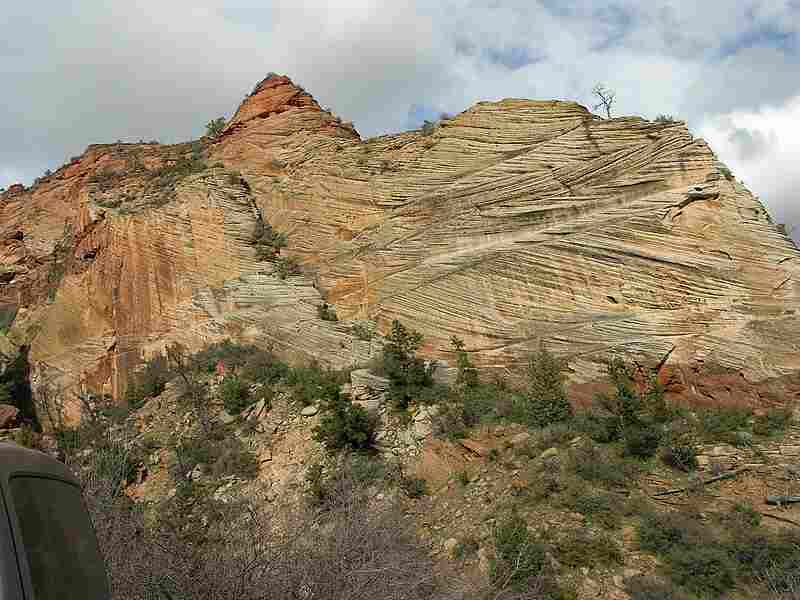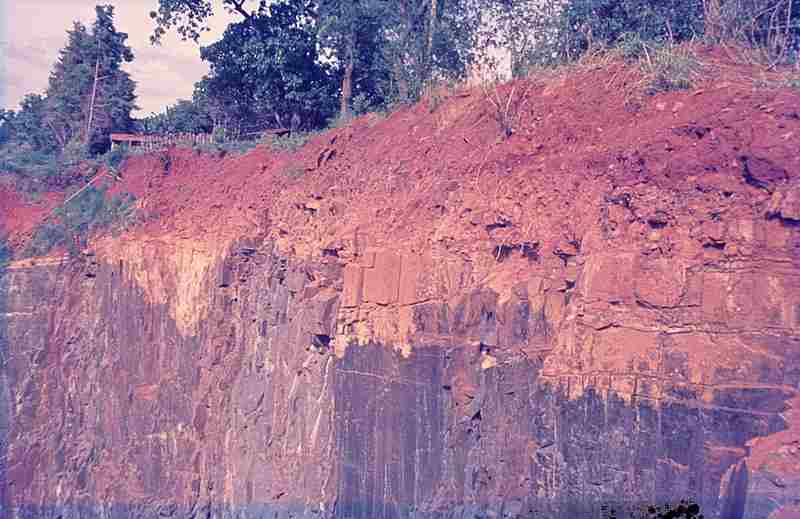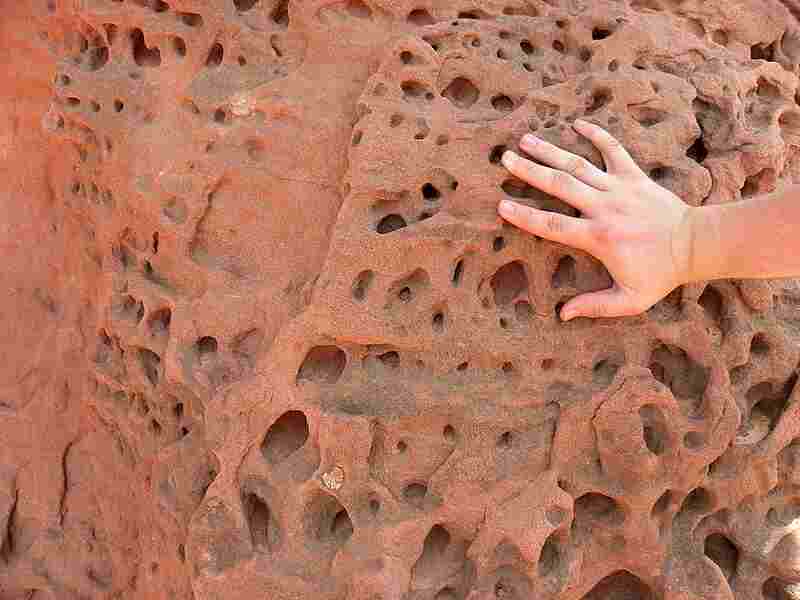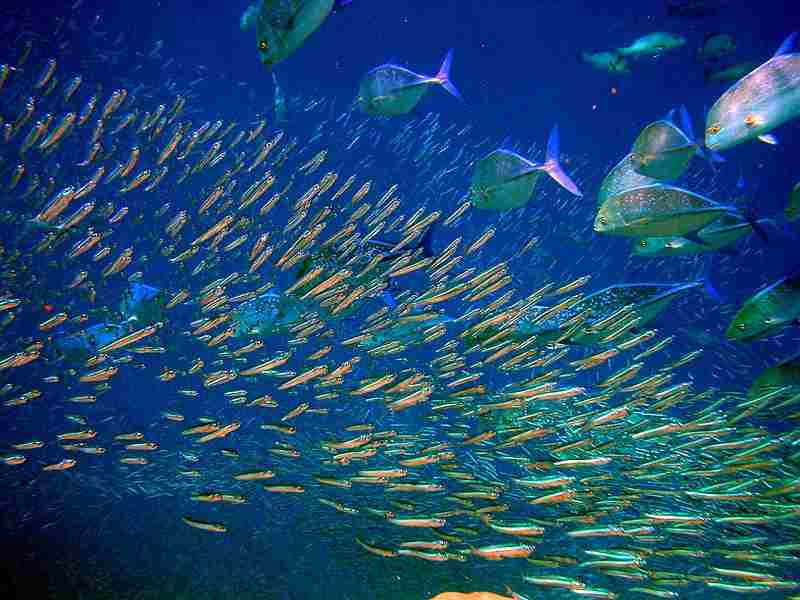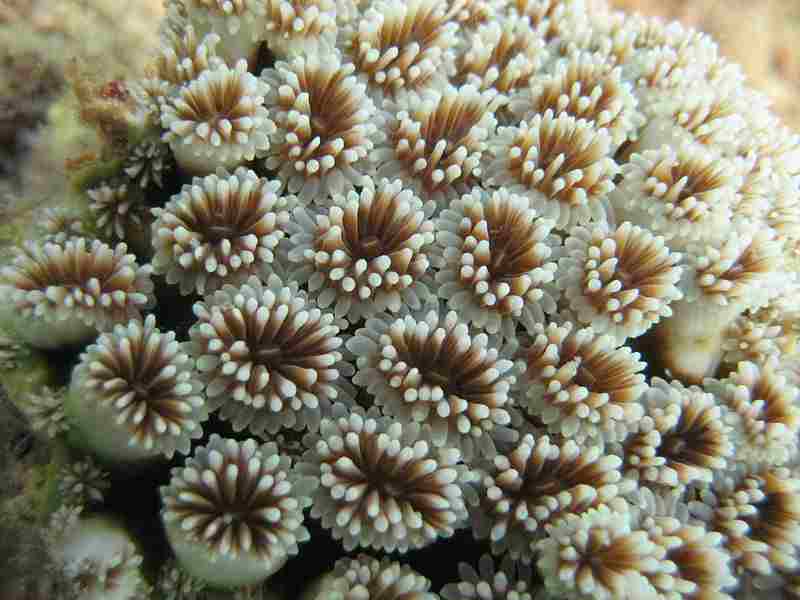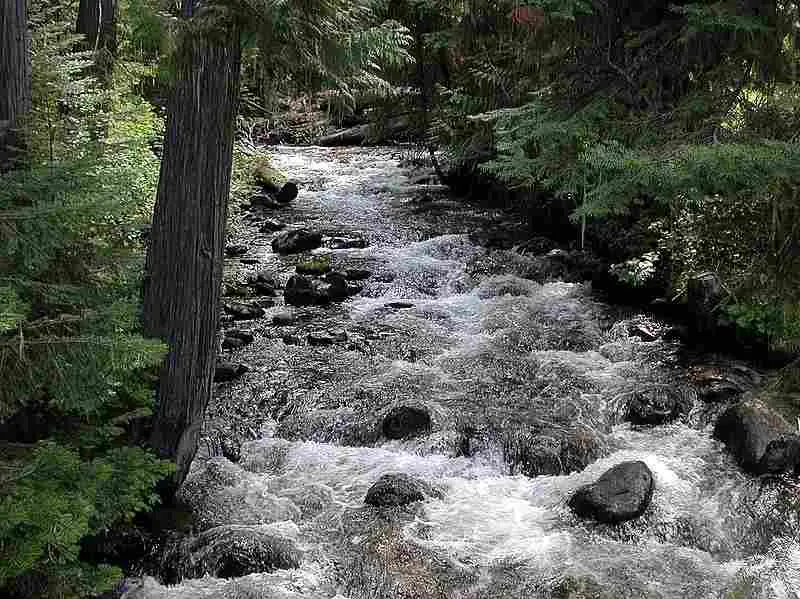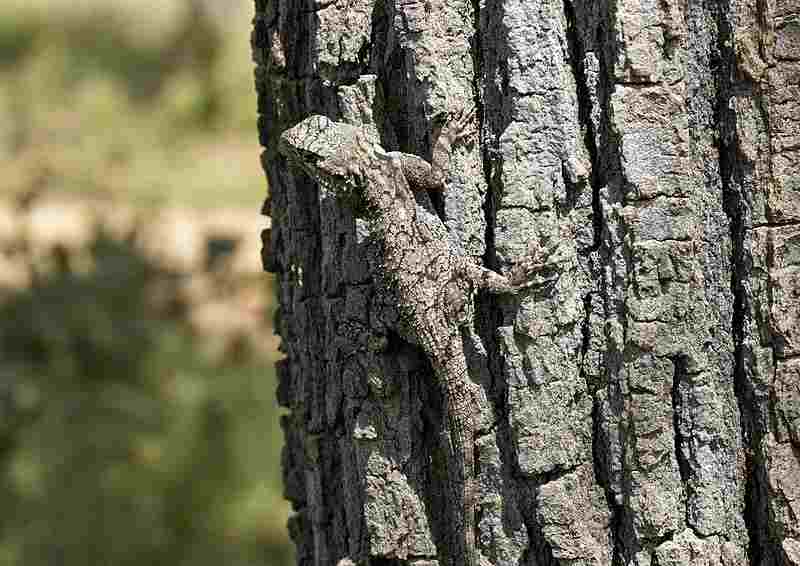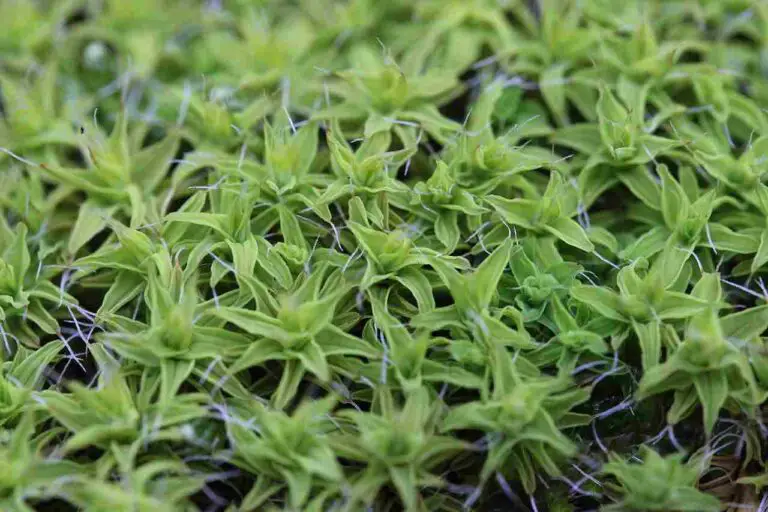Why Weathering is Important Explained With 7 Reasons
Why weathering is important is due to its role in soil formation, as an aspect of sedimentation, as well as its contributions to nutrient cycling, production/degradation of civil engineering raw materials, mineral deposit formation and degradation, landscape development, and morphological evolution of aquatic ecosystems.
This article discusses why weathering is important with seven (7) reasons, as follows;
1). Role in Soil Formation (as one of the reasons Why Weathering is Important)
Weathering is a fundamental geological process that is crucial in its role toward the formation of soil(s). It basically involves the breakdown and/alteration of rocks and minerals on the Earth's surface, in most cases leading to soil creation [2].
Weathering contributes immensely to soil development on various scales, through its mechanical and chemical dynamics. The following subsections delve into the importance of weathering in soil formation and explores the types of weathering involved.
Importance of Weathering in Soil Formation
Weathering is important in soil formation because it unifies multiple, biotic and abiotic variables such as nutrient availability, biological activity/bioturbation [16], plant growth, geomorphic modification and hydrological processes; often to the benefit of both the physicochemical environment and its biological inhabitants.
Physical processes of weathering, breaks down rocks into smaller pieces with little to no compositional change. This fragmentation increases the surface area of rocks, and exposes more parent material to subsequent chemical weathering. As rocks are broken into smaller particles, they become potential components of soil, either as rock fragments or mineral grains.
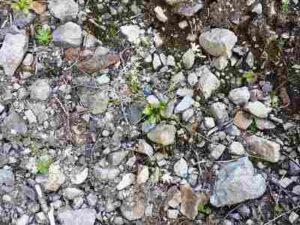
The alteration of minerals and rocks due to chemical reactions is described as chemical weathering, and is often facilitated by abiotic factors like atmospheric gases and water. Through the process of chemical weathering, minerals in rocks can be transformed into new compounds. These altered minerals can also become essential components of soil.
Activities of living organisms like plants and animals, also leads to soil formation.
Plant roots can penetrate small cracks in rocks, causing these rocks to break apart over time. This process facilitates mechanical weathering by enhancing the rate of physical disintegration, thereby creating smaller rock fragments that contribute to the process of soil formation.
Soil composition includes mineral particles, water, organic matter/biomass, and air. Weathering provides the mineral particles by breaking down larger parent rocks. In addition, chemical changes during weathering can produce new diagenetic minerals like kaolinite (clay) [11], which are essential components of many soils and contribute to their textures.
Essential nutrients are released during chemical weathering of rocks, including magnesium, calcium, and potassium, which become components of the soil. These nutrients are vital for plant growth and are made available to these plants through soil formation processes.
Water percolation and retention are both affected by weathering, which contributes to the development of soil structure. Well-structured soils often allow significant amounts of water to infiltrate and be stored, to the benefit of plant growth and ecosystem sustainability.
Types of Weathering Contributing to Soil Formation
Types of weathering contributing to soil formation are; physical, chemical and biological weathering respectively.
Mechanical weathering process is characterized by the physical breakdown of rocks into smaller fragments, without any notable alteration of their chemical composition. Some examples of mechanical weathering mechanisms are; freeze-thaw cycles, exfoliation, abrasion, root expansion, and alternate wetting-and-drying [3]. These processes disintegrate large rock masses to create smaller rock particles that become part of the soil matrix.
Chemical weathering can be described as the alteration of rocks and minerals through chemical reactions. Organic acids, water, and atmospheric gases, can all contribute to chemical weathering.
The chemical deterioration of minerals, leads to the release of ions and the formation of new chemical compounds. Clay minerals, for instance, are often produced through chemical weathering and alteration of parent minerals like feldspar; and are important constituents of soil.
Biological weathering is rock degradation driven by the activities of living organisms. For example, plant roots can penetrate rocks, creating fractures and facilitating mechanical breakdown. As rocks break apart, they contribute to the mineral content of both preexisting and newly-formed soils.
2). Weathering as an Aspect of Sedimentation
Weathering also has a pivotal role to play in the formation of sedimentary rocks, which implies that it is an essential aspect of sedimentation. This fact is also valid in explaining why weathering is important.
The weathering of preexisting/parent rocks and minerals can be viewed as the initial step in the creation of sediment, which, over time, can accumulate and lithify to form sedimentary rocks. It is one of multiple sedimentary processes including erosion, deposition, and lithification [4].
This section explores the question of why weathering is a crucial process in sedimentation, and provides a discussion of some factors involved in weathering of sedimentary rocks.
Importance of Weathering in Sedimentation
Weathering is important in sedimentation because it served as a source of sediments, medium for solid rock transformation, as well as a precursor to sediment transportation and deposition.
Sediments mostly originate through weathering; which is the process by which rocks and minerals are broken down into smaller fragments and particles. These weathered materials, referred to as sediment, serve as the primary resource for the formation of sedimentary rocks. In the absence of weathering, there would be no raw material for sedimentary rocks.
As implied in the above explanation, weathering transforms solid rock masses into loose particles, which can be then transported and deposited in various geological environments. This transformation is characterized by the breakdown of minerals, alteration of rock chemical composition, and disintegration of rock physical structures.
After weathering has produced sediment, agents of erosion, such as wind, ice and water, transport these particles to sedimentary basins where they can accumulate over time [1]. Without the initial process of weathering, there would be no sediment to transport or accumulate.
Sedimentation is dependent on the deposition of transported sediment, in specific geological regions or settings. This deposition is a critical phase in the formation of sedimentary rocks. Weathering is central to the supply of sediment, that ultimately settles and accumulates in sedimentary basins to form rocks.
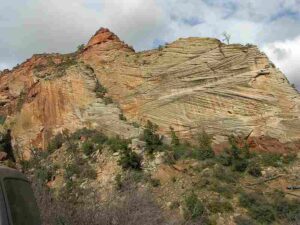
Factors of Weathering in Sedimentary Rocks
Factors of weathering in sedimentary rocks are the agents of weathering, and the conditions influencing sediment dynamics in relation to weathering, including; water, wind, ice, acids, salts, plants, animals, and physicochemical changes (such as temperature fluctuations).
Particularly in the form of rainfall, water contributes to chemical weathering by dissolving soluble minerals, and facilitating chemical reactions [8]. Freeze-thaw cycles in the presence of (liquid) water can also mechanically disintegrate rocks.
Through processes such as frost-wedging, ice can facilitate significant mechanical weathering by expanding within cracks and crevices in rocks, causing these rocks to fracture.
Both inorganic (such as carbonic acid in rainwater) and organic (such as from decaying vegetation) acids, can chemically alter and degrade minerals in rocks, leading to alteration of their compositions.
Deposition of salts in pores and cracks of rocks, followed by the crystallization of these deposited salts, can result in mechanical weathering by exerting pressure on the rock masses [10].
The roots of plants can penetrate rocks to cause significant physical disruption. Similarly, burrowing animals can also contribute to mechanical weathering by creating grooves and fractures in parent rocks.
Physicochemical changes such as rapid temperature fluctuations, especially in regions that are subject to daily freeze-thaw cycles, can lead to mechanical weathering as rocks expand and contract in alternate succession.
3). Contribution to Nutrient Cycling (as one of the reasons Why Weathering is Important)
Weathering has vital contributions to nutrient cycling within all major ecosystems, including terrestrial biomes like forests and aquatic ecosystems like lakes, ponds and oceans. It is an essential process behind nutrient release, and contributes significantly to determining the availability of nutrients for autotrophs and other organisms.
An exploration of how weathering is important for nutrient cycling, followed by an outline of its role, is provided in this section.
Importance of Weathering in Nutrient Cycling
The importance of weathering in nutrient cycling is based on its involvement in processes and phenomena like nutrient release, mineral breakdown, soil formation, plant nutrition, organic nutrient cycling, and microbial dynamics.
Various nutrients can be released as weathering processes break down minerals in rocks, including; calcium, magnesium, potassium, and phosphorus; which then enter into the soil.
These nutrients are critical factors that determine plant growth, and are vital as abiotic components of the overall scheme of nutrient recycling. Through weathering and its partner-processes, a consistent supply of nutrients is maintained in the natural environment, and resource depletion is mitigated.
Chemical weathering, in particular, is made up of various reactions that dissolve and transform minerals in rocks. As these minerals break down, they release nutrient ions that become available for uptake by autotrophs and microorganisms [9].
As discussed already, weathering contributes to the formation of soil, which is the primary site of nutrient cycling in natural ecosystems. The disintegration of rocks into smaller particles, creates the mineral-rich substrate in which both microbial soil organisms and plants thrive.
Trees and understory vegetation in forests, both rely on weathering-derived nutrients for their survival, growth and development. Weathering ensures that there is a steady supply of essential nutrients required for plant nutrition (it must be noted that such weathering may not always involve rock masses, but may affect soils as well).
Biogeochemical nutrient cycles are complemented by weathering, through the provision of "new" nutrients from the breakdown of parent rocks. These newly released nutrients supplement the resource-base of nutrients that are derived from biodegradation of organic matter.
Lastly, some bacteria are known for their ability to break down minerals [15]. These bacteria can facilitate and enhance nutrient cycling by causing the release of nutrients from rocks and minerals, often leading to improved plant nutrition in natural ecosystems.
Role of Weathering in Nutrient Cycling
The role of weathering in nutrient cycling is simply nutrient release.
By breaking down rocks and minerals, weathering releases essential nutrients into the soil. These nutrients therefore become available for uptake by plants, and support their growth and development. Additionally, weathering complements the organic nutrient cycle by providing a continuous supply of nutrients derived from the breakdown of earth materials. This function ensures a stable and balanced process or nutrient cycling within ecosystems.
4). Role in Production/Degradation of Civil Engineering Raw Materials
Weathering makes a significant contribution to the production and degradation, of raw materials that are utilized in civil engineering and construction.
This is because the weathering process can both create suitable materials for construction, and lead to the degradation of existing structures.
This section contains an overview, followed by an address of enquiries related to weathering in civil engineering and building materials.
Importance of Weathering in Civil Engineering
The importance of weathering in civil engineering includes its roles in raw material formation, its effects on building materials, and its consideration in durability assessment.
Formation of certain raw materials used in civil engineering, such as some aggregates, can be largely attributed to weathering. Natural weathering of rocks can break them down into suitable shapes and sizes for construction purposes, or alter their composition and physical attributes to make them useful in construction.
Natural stone, commonly used in construction, is formed through geological processes that often include weathering. In the same vein, concrete relies on some weathered aggregates like sand and lateritic gravel, to provide the necessary strength and durability.
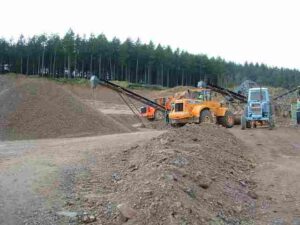
Various building materials are affected by the natural process of weathering, over time. Understanding the susceptibility of materials to weathering, helps engineers select appropriate materials for construction to ensure longevity of structures [12].
In the area of durability assessment, civil engineers often evaluate the resistance to weathering of materials, in order to determine their suitability for specific environments. This approach to assessment, ensures that structures are able to withstand long-term exposure to agents of weathering.
Overview of Weathering in Civil Engineering
Weathering in civil engineering can be discussed in terms of the effects of weathering on building materials and construction projects.
In civil engineering, weathering often refers to the deterioration of building materials over time under the influence of various environmental factors. This may include processes like salt crystallization, wetting and drying cycles, frost action, chemical attacks, and biological or mineral growth on structure surfaces.
Due to its deteriorative implications, weathering can have significant impact on civil engineering projects. It is often behind physical changes in construction materials, which reduce their lifespan and structural integrity.
A term commonly used to refer to weathering in the field of civil engineering is corrosion [14]. Materials such as steel can corrode and weaken due to weathering effects of chemical reagents. Degradation can result in the failure of structural components, posing significant safety risks.
Materials Commonly Used in Civil Engineering
Materials commonly used in civil engineering are;
1. Timber
2. Steel
3. Natural Rock Masses
4. Asphalt
5. Polymers and Composites
6. Portland Cement Concrete
Many of these, including steel, natural rock masses, and concrete, are very susceptible to weathering, depending on the conditions of their use.
Types of Weathering in Buildings
Types of weathering that affect buildings and construction materials include; chemical weathering by salt crystallization and chemical attack; as well as physical weathering by alternate wetting and drying cycles, or frost action.
Salt crystallization is characterized by the growth of salt crystals within materials, which can result in surface damage and cracking.
Repetitive exposure to moisture and drying or wetting and drying cycles, causes expansion and contraction of construction materials, leading to stress and ultimate failure.
The alternate freezing and thawing of water within construction materials and structures, leads to cracks and weakening.
Exposure to chemicals in the environment, including pollutants, can erode and deteriorate building materials.
5). Role in Mineral Deposit Formation and Degradation (as one of the reasons Why Weathering is Important)
As a natural geologic process, weathering is critical in the formation and degradation of mineral deposits.
It can create new mineral deposits through the breakdown of existing rocks and release of mineral ions, and it can also lead to the degradation of mineral deposits over time.
This section provides overview of this concept, as well as a highlight of issues related to weathering of mineral deposits.
Importance of Weathering in Mineral Deposit Dynamics
The importance of weathering in mineral deposit dynamics, is attributed to factors like deposit formation, supergene enrichment, and deposit degradation.
Some mineral deposits form as a result of weathering processes. Weathering comprises of the breakdown and decomposition of rocks and minerals on the Earth's surface. During this process, various mineral ions can be released into soil and groundwater. With time, these ions can accumulate and precipitate to form new mineral deposits. This kind of geologic sequence is especially common in the formation of secondary or supergene ore deposits.
Supergene enrichment is a well-understood aspect of deposit formation/modification, that is characterized by the concentration of valuable minerals through weathering processes [6]. As rocks undergo weathering in some regions, certain minerals, especially ore minerals, may be displaced to other zones where they become concentrated, leading to the formation of economically significant mineral deposits.
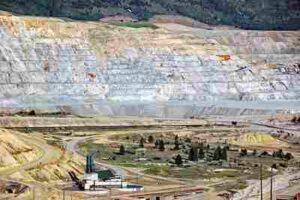
In similar fashion, weathering can also contribute to the degradation of existing mineral deposits. Minerals that are exposed to weathering agents like water, oxygen, and acids can be subjected to chemical reactions that cause their breakdown or dissolution. This can in turn lead to the loss of valuable minerals from a deposit over time.
Overview of the Weathering of Mineral Deposits
Weathering of mineral deposits is a combination of mechanical processes, chemical reactions, and formation of secondary deposits.
Weathering involves various processes, which may be categorized broadly into mechanical and chemical classes. Mechanical weathering breaks rocks into smaller pieces, and exposes more surface area to chemical weathering. Chemical weathering is driven by reactions that occur between minerals in rocks and external agents like water and air.
Certain types of mineral deposits, including pyrite, bauxite, kaolin, and nickel laterite, can form through the process of weathering. These deposits are often referred to as secondary or supergene deposits because they are outcomes of the alteration and concentration of minerals, during weathering.
Chemical weathering reactions usually result in the alteration of minerals within rocks. For example, ferromagnesian silicates and feldspar can be disintegrated into smaller particles and converted into clay minerals or dissolved ions through weathering reactions. This alteration process can as well contribute to the formation of new mineral deposits.
Mineral hydration is a chemical weathering process in which water molecules or hydroxyl ions attach rigidly to the atoms and molecules of minerals. This can result in changes to mineral structures and compositions.
6). Role of Weathering in Landscape Development
Weathering is an essential geologic contributor to the development and modification of landscapes on the Earth's surface.
It is critical in shaping the physical configuration of landscapes, and its importance can be understood by evaluating how it interacts with erosion and other essential geological processes.
This section provides an overview, as well as by answers to possible questions related to the involvement of weathering in landscape development.
Importance of Weathering in Landscape Development
The importance of weathering in landscape development is based on its role as a precursor to erosion, in surface modification, and soil formation respectively.
Both erosion and weathering are closely-interconnected processes. Weathering first breaks down exposed bedrock into weaker structures and smaller fragments. This fragmentation function, creates a more susceptible surface for erosion to proceed effectively. As erosion removes the fragmented materials, it in turn exposes new bedrock to further weathering processes.
Processes of weathering continually change the configuration and characteristics of Earth's surface, by wearing away exposed surfaces. It can cause the smoothening and rounding of rough areas of rocks, and makes rock materials to break down over time. In many cases, this process has a largescale impact on the physical appearance and textural condition, of landscapes.
As already discussed, weathering is often the initial step involved in the formation of soils. As weathering processes smooth rough rock surfaces and break down larger masses, small fragments and particles of weathered minerals may mix with organic matter from plant and animal sources, to create what is known as soil. Soils are themselves a critical component of landscapes, and support both terrestrial and aquatic ecosystems.
Landscape weathering occurs due to various agents, including water, ice, wind, salt, acids, and changes in pressure or temperature. These agents act on rock masses (both within and on the Earth), causing measurable physical and chemical alterations.
Involvement of Weathering in Landscape Formation/Development
The involvement of weathering in landscape formation/development can be understood by a recap of concepts discussed earlier, as follows.
Weathering and erosion function hand-in-hand, in landscape development. Processes of weathering break down and fragment exposed bedrock masses, preparing them for erosion. Erosion then removes the fragmented materials, thereby creating landforms and exposing new rock surface areas to weathering.
Weathering processes, especially physical weathering, smooth rough and prominent rock surfaces. This smoothing effect can contribute significantly to the overall appearance and structure of landscapes.
Soil formation relies on weathering as an essential factor. The breakdown of rock materials by agents of weathering, along with the incorporation of organic matter into the matrix of weathered materials, results in the development of soil, which is a foundational element of all terrestrial landscapes.
Modification of the Landscape by Weathering
Modification of the landscape by weathering is a function of denudation and transport, which can produce micro and mesoscale landforms.
In combination with erosion, weathering influences landscapes, and has a particularly significant role where denudation (the degradational modification of the land surface) is transport-limited. This implies that the rate of removal of earth material is limited by the ability of weathering processes to produce rock and mineral fragments.
Rock weathering creates micro-scale surface morphological features (submillimeter) on rocks [13]. The micro-scale features contribute to the development of mesoscale landforms, which can range from several millimeters to several meters in size.
7). Effect on Morphology and Organisms of Aquatic Ecosystems (as one of the reasons Why Weathering is Important)
Weathering is ubiquitous on the Earth's surface, so that it also occurs in aquatic ecosystems, where it affects both their morphology and the living conditions organisms that inhabit them.
Aquatic ecosystems include a wide range of environments, from rivers and lakes to coastal intertidal zones and oceans. Weathering influences these ecosystems in diverse ways that make it an essential and impactful process.
In this section, an overview of how weathering affects aquatic ecosystems is provided in an enumerated form, as follows;
1). Sediment Supply and Water-body Morphology
The weathering of rocks and minerals on land contributes to the production and supply of sediments to aquatic ecosystems.
Weathering processes break down rocks into smaller sedimentary particles, such as rubble, sand, silt, and clay. These particles are transported by rivers and streams into lakes, coastal areas, and estuaries.
The deposition and accumulation of weathered sediments has a profound effect on the morphology of aquatic ecosystems. Sediment deposition can lead to the formation of deltas, alluvial plains, and various coastal landforms [5]. It influences the geomorphology and depth of riverbeds and lakes, as well as coastal shorelines.
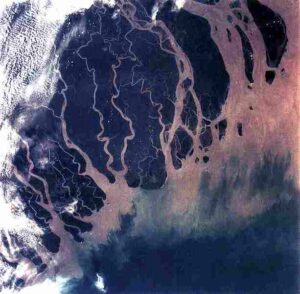
2). Influence of Weathering on Water Chemistry
Weathering also entails some chemical processes that can alter the chemistry of water bodies. For instance, the dissolution of carbonate minerals during chemical weathering can lead to changes in water pH and ion concentrations [7]. This can influence the availability of nutrients and ions that are necessary for survival of aquatic animals.
Nutrient loading is often an outcome of weathering, which contributes to the release of nutrients such as nitrogen and phosphorus, from rocks and soils. These released nutrients can enter into aquatic ecosystems through stormwater runoff and groundwater discharge, to influence the growth of aquatic plants and algae.
3). Role of Weathering in Aquatic Habitat Formation
Sediments derived from weathering can accumulate to create benthic habitats on the bed of marine water bodies, as well as ponds, rivers, and lakes. These habitats are critical for a variety of aquatic organisms, including bottom-dwelling invertebrates and benthic fish species.
4). Biological Effects of Weathering on Aquatic Communities
Biological effects of weathering on aquatic communities may occur in the form of water quality changes, and may lead to biological phenomena like proliferation of algal blooms.
The physical and chemical changes that are brought about by weathering, can affect water quality within aquatic ecosystems. Altered water quality can in turn influence the distribution and wellbeing of aquatic organisms, such as aquatic invertebrates and fish.
Changes in the availability of nutrients due to weathering, can lead to excessive algal growth, and result in algal blooms. While some algal blooms are natural and harmless, human activities and their environmental impacts that enhance nutrient loading (such as agricultural pollution) can combine with weathering to exacerbate this problem, leading to harmful algal blooms that can degrade the living conditions of aquatic life and water quality.
5). Erosion and Sediment Deposition in Water Bodies as Co-Processes of Weathering
Weathering contributes to the weakening and disintegration of rocks, thereby making them more susceptible to erosion. Erosion can facilitate the transport of sediments into aquatic ecosystems, which affects water clarity and the habitats of aquatic organisms.
Sediments transported by hydrological forces can settle on the bottom of aquatic ecosystems, where they have various effects on benthic habitats and impact the feeding and breeding behaviors of aquatic species. These instances reveal the intricate links between weathering and hydrological processes involved in the evolution of water bodies.
Conclusion
Why weathering is important is due to;
1. Role in Soil Formation
2. Aspect of Sedimentation
3. Contribution to Nutrient Cycling
4. Production/Degradation of Civil Engineering Raw Materials
5. Role in Mineral Deposit Formation and Degradation
6. Involvement in Landscape Development
7. Effect on Morphology and Organisms of Aquatic Ecosystems
References
1). Alijani, A.; Alijani, A.; Ghadimvand, N.; Aleali, M. (2017). "Analyzing Factors Affecting Erosion and Sedimentary Deposits Using the Empirical Method of PSIAC." Open Journal of Geology. 07. 1078-1093. Available at: https://doi.org/10.4236/ojg.2017.78072. (Accessed 20 September 2023).
2). Brilhante, S.; dos Santos, J.; Souza Júnior, V.; Araujo, J.; Ribeiro Filho, M.; Corrêa, M. (2017). "Weathering of Rhyolites and Soil Formation in an Atlantic Forest Fragment in Northeastern Brazil." Revista Brasileira de Ciência do Solo. 41. Available at: https://doi.org/10.1590/18069657rbcs20160558. (Accessed 20 September 2023).
3). Diop, S.; Ogawa, Y.; Zhang, M. (2008). "Effects of Cyclic Desiccation on Physical and Mechanical Properties of Neogene Sandstones and Siltstones From Boso Peninsula, Japan." Journal of the Japan Society of Engineering Geology. 49. 150-163. Available at: https://www.semanticscholar.org/paper/Effects-of-Cyclic-Wetting-and-Drying-on-Physical-of-Souleymane-Ogawa/f51b91a6a3317ac5f037ced1f4b1a5d9fb273e08. (Accessed 20 September 2023).
4). Eriksson, P.; Octavian, C.; Sarkar, S.; Tirsgaard, H. (2005). "Patterns of sedimentation in the Precambrian." Sedimentary Geology. 176. 17-42. Available at: https://doi.org/10.1016/j.sedgeo.2005.01.003. (Accessed 20 September 2023).
5). Gani, M. (2020). "Clastic shorelines and deltas." Available at: https://doi.org/10.1016/B978-0-444-64134-2.00012-2. (Accessed 20 September 2023).
6). Harraz, H. (2013). "Supergene Enrichment." Available at: https://doi.org/10.13140/RG.2.1.4836.9520. (Accessed 20 September 2023).
7). Ilyina, T.; Zeebe, R. (2012). "Detection and projection of carbonate dissolution in the water column and deep-sea sediments due to ocean acidification." Geophysical Research Letters. 39. Available at: https://doi.org/10.1029/2012GL051272. (Accessed 20 September 2023).
8). Lakshmanan, E.; Kannan, R. (2007). "Chapter 11 Rock–water interaction and its control on chemical composition of groundwater." Developments in Environmental Science. 5. Available at: https://doi.org/10.1016/S1474-8177(07)05011-5. (Accessed 20 September 2023).
9). Liu, Y.; Lu, M.; Zhang, X.; Sun, Q.; Liu, R.; Lian, B. (2019). "Shift of the microbial communities from exposed sandstone rocks to forest soils during pedogenesis." International Biodeterioration & Biodegradation. 140. 21-28. Available at: https://doi.org/10.1016/j.ibiod.2019.03.006. (Accessed 20 September 2023).
10). Oguchi, C.; Yu, S. (2021). "A review of theoretical salt weathering studies for stone heritage." Progress in Earth and Planetary Science. 8. Available at: https://doi.org/10.1186/s40645-021-00414-x. (Accessed 20 September 2023).
11). Rafaela, M. Delgado H. A.; Rossi, I.; Iglesia, A.; Ramseyer, K. (2009). "Origin and Diagenetic Evolution of Kaolin in Reservoir Sandstones and Associated Shales of the Jurassic and Cretaceous, Salam Field, Western Desert (Egypt)." Available at: https://doi.org/10.1002/9781444304336.ch14. (Accessed 20 September 2023).
12). Saba, D. (2013). "Investigating the durability of structures." Available at: https://www.researchgate.net/publication/279814044_Investigating_the_durability_of_structures. (Accessed 20 September 2023).
13). Turkington, A.; Phillips, J.; Campbell, S. (2005). "Weathering and landscape evolution." Geomorphology. 67. 1-6. Available at: https://doi.org/10.1016/j.geomorph.2004.08.013. (Accessed 20 September 2023).
14). Urban, V.; Krivy, V.; Kreislova, K. (2015). "The Development of Corrosion Processes on Weathering Steel Bridges." Procedia Engineering. 114. 546-554. Available at: https://doi.org/10.1016/j.proeng.2015.08.104. (Accessed 20 September 2023).
15). Uroz S.; Calvaruso, C.; Turpault, M. P.; Frey-Klett, P. (2009). "Mineral weathering by bacteria: ecology, actors and mechanisms." Trends Microbiol. 2009 Aug;17(8):378-87. Available at: https://doi.org/10.1016/j.tim.2009.05.004. (Accessed 20 September 2023).
16). Wackett, A.; Yoo, K.; Amundson, R.; Heimsath, A.; Jelinski, N. (2018). "Climate controls on coupled processes of chemical weathering, bioturbation, and sediment transport across hillslopes: Climate, weathering, bioturbation and sediment transport on hillslopes." Earth Surface Processes and Landforms. 43. Available at: https://doi.org/10.1002/esp.4337. (Accessed 20 September 2023).
